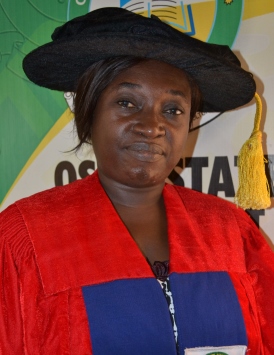Content

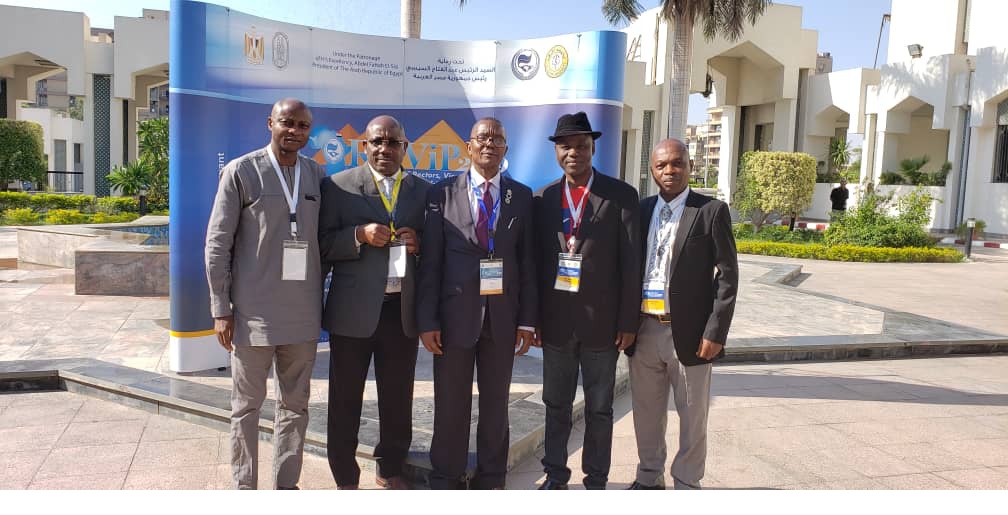 Osun State University under the leadership of Professor Labode Popoola was recently inducted as a full member of the Association of African Universities (AAU). The official membership certificate was presented to the Vice-Chancellor by the president of the AAU, Professor Orlando Antonio Quilambo in Egypt on the 11th of July 2019 during the Conference of Rectors, Vice-Chancellors and Presidents of African Universities (COREVIP) at the Al-Azhar University Conference Centre, Cairo which held between 8th and 10th of July 2019.
Osun State University under the leadership of Professor Labode Popoola was recently inducted as a full member of the Association of African Universities (AAU). The official membership certificate was presented to the Vice-Chancellor by the president of the AAU, Professor Orlando Antonio Quilambo in Egypt on the 11th of July 2019 during the Conference of Rectors, Vice-Chancellors and Presidents of African Universities (COREVIP) at the Al-Azhar University Conference Centre, Cairo which held between 8th and 10th of July 2019.
The conference themed The Role of Higher Education Institutions in Promoting Continental Education Strategy For Africa (CESA) was attended by Vice-Chancellors, Rectors and notable personnel from various institutions in Africa.
The conference held ten plenary sessions featuring amongst other things, the AAU business, keynote presentations, CESA higher education contribution in the areas of Science, Technology, Engineering and Mathematics (STEM) curriculum reforms and Technical and Vocational Education and Training (TVET), sponsored presentation to African higher education, CESA higher education contribution in the areas of revitalization, research, innovation and conflict management, CESA higher education contribution in the areas of data management and ICT, CESA higher education contribution in the areas of mobility (via new ways of educational improvement), engaging with the diaspora for promoting African Higher Education and round table discussions on efforts, needs, and coordination of sub-clusters. Each session held with sub-theme and they were very interactive, impactful and well moderated.
The conference also recorded twelve parallel sessions on Wednesday July 10, 2019 to cover wider areas of seeking solution to the various challenges in the educational sector under the chairmanships of important dignitaries from the academia including the Vice-Chancellor of Osun State University, Professor Labode Popoola. Delegates from Osun State University were lead by the Vice Chancellor, Prof. Labode Popoola while others include Prof. A. Kola-Olusanya, Director, Inter-Campus and Public Affairs; Prof. D. I. Akintayo, Provost,College of Management & Social Sciences; Dr. O. C. Nwoke, Ag. Provost, College of Agriculture and Mr. A. O. Abiodun, Deputy Registrar Academic Affairs Unit.
|
EEE 200: STUDENTS WORK EXPERIENCE PROGRAMME I
Course Learning Outcomes $11. Understand the establishment’s services, products and goals $12. Understand the roles of available departments and the contribution of their own department to the operation of the establishment $13. Build confidence to work individually and team spirit to work with others in their establishment $14. Correlate contents learnt in the curriculum with experience in the field, and learn to apply industry standard tools to problem-solving $15. Deliver and present their work experience effectively through written and oral communication $16. Recognize the importance of self-learning and development |
|
EEE 201: APPLIED ELECTRICITY I
Course Learning Outcomes $11. Understand the basics of electric power, voltage, current, power sources and identify various active and passive components $12. Describe various configurations of linear resistive networks and analyse them using various network theorems such as KCL,KVL, Norton, Thevenin and Superposition theorems $13. Differentiate between linear and non-linear resistive networks $14. Understand basic logic gates and digital circuits $15. Identify different solid state devices $16. Use simulation software to simulate and analyse linear and nonlinear resistive networks and digital circuits |
|
EEE 202: APPLIED ELECTRICITY II
Course Learning Outcomes $11. Understand magnetic field of currents in space $12. Compute initial conditions and step response for current and voltage in first order RL and RC inductor and capacitor circuits. $13. Compute initial conditions and time response for current and voltage in second order RLC circuits. $14. Compute the response of RLC circuits to sinusoidal steady state $15. Design and analyse RLC circuits using phasor techniques $16. Explain the basic concepts of magnetic circuits, mutual inductance, and the operation of transformers, generators and motors $17. Discuss various types of measuring instruments $18. Use simulation software to simulate and analyze first order and second order circuits |
|
EEE 210: INTRODUCTION TO ELECTRICAL AND ELECTRONICS ENGINEERING
Course Learning Outcomes $11. Understand the Electrical and Electronic Engineering programme and ethical responsibilities as both a student and professional engineer $12. Understand the disciplines and opportunities available in the field of electrical and electronic engineering $13. Understand several contemporary issues in power, communications and control systems engineering $14. Write simple programs using MATLAB $15. Understand the need for life-long learning |
|
EEE 231: ENGINEERING MATHEMATICS I
Course Outcomes $11. Apply the fundamental concepts of limits, continuity and differentiation $12. Learn to find the solution of constant coefficient differential equations $13. Learn the techniques of partial differentiation of functions of several variables and use this to solve problems related to maxima and minima $14. Acquire knowledge about the ideas and techniques of matrices, determinants and vector algebra $15. Acquire knowledge of vector calculus and its application in electromagnetic fields $16. Apply MATLAB to basic Engineering mathematics problems |
|
EEE 232: ENGINEERING MATHEMATICS II Course Learning Outcomes $11. Model different physical systems using second order differential equations $12. Learn to solve second order differential equations arising in different physical systems and fields $13. Evaluate line integrals and multiple integrals in rectangular, polar, spherical and cylindrical coordinates $14. Acquire knowledge of applications of line, double and triple integrals, including Green’s theorem, Stoke’s theorem and Divergence theorem. $15. Acquire knowledge of functions of complex variables, linear and non-linear transformations and mapping $16. Apply MATLAB to basic Engineering mathematics problems |
|
EEE 300: STUDENTS’ WORK EXPERIENCE PROGRAMME II
Course Learning Outcomes $11. Understand the establishment’s services, products and goals $12. Understand the roles of available departments and the contribution of their own department to the overall operation $13. Build confidence to work individually and team spirit to work with others in their establishment $14. Correlate contents learnt in class with field experience, and learn to apply industry standard tools to problem-solving $15. Deliver and present their work experience effectively through written and oral communication $16. Recognize the importance of self-learning and development
|
|
EEE 308: DIGITAL CIRCUIT ANALYSIS AND DESIGN
Course Learning Outcomes $11. Differentiate between analogue and digital signals and devices $12. Understand principles of operation of Analog to Digital Converter (ADC) and Digital to Analog Converter (DAC) $13. Analyze the building blocks of Combinational logic circuits $14. Analyze the building blocks of sequential logic circuits and illustrate the concept of synchronous and asynchronous sequential circuits $15. Understand various concepts in interfacing digital devices with the analog world- parallel and serial transmission, microcomputer, microprocessors and microcontrollers $16. Differentiate between RAM and ROM and understand the technologies behind them $17. Understand the power requirements of digital elements
|
|
EEE 310: MEASUREMENT & INSTRUMENTATION Course Learning Outcomes $11. Recognize the evolution and history of units and standards in Measurements. $12. Understand the working principle of instruments for measuring various electrical engineering parameters such as current, voltage, resistance, power, energy , etc $13. Select appropriate sensors and transducers in measuring physical parameters $14. Understand various signal manipulation techniques $15. Acquire knowledge of biomedical instrumentation principles $16. Think of innovative ideas to improve existing measurement technologies
|
|
EEE 313: ELECTRONIC CIRCUITS I Course Learning Outcomes $11. Acquire basic knowledge on the working principles of various semi-conductor devices such as diodes and BJTs $12. Develop capability in analysis of BJT and FET amplifier circuits $13. Develop competence in frequency response analysis of amplifiers $14. Design signal and power amplifiers using BJTs and FETs $15. Acquire knowledge on basic digital electronics circuits $16. Analyze and design combinatorial circuits
|
|
EEE 320: ELECTRONIC CIRCUITS II Course Learning Outcomes $11. Analyze important electronic circuits (amplifiers, filters, oscillators) $12. Use simulation software $13. Build, make measurements, and troubleshoot electronic circuits $14. Analyse and design wave-shaping sequential circuits $15. Understand various memory circuits, logic families (including TTL, ECL, RTL, DTL) and IC technologies |
|
EEE 315: ELECTRICAL MACHINES I Course Learning Outcomes $11. Understand the energy conversion principles in electrical machines $12. Understand the fundamental characteristics of various types of DC machines-generators, motors and their shunt and series characteristics $13. Understand the concept of equivalent circuit in transformers $14. Conduct simple tests on electrical machines and transformers $15. Understand the construction and design issues associated with electrical machines
|
|
EEE 314: ELECTRICAL MACHINES II Course Learning Outcomes $11. Understand the fundamental theory and principles of rotating machines. $12. Understand the equivalent circuit representation and analysis of Induction motors and synchronous machines. $13. To also introduce the students to the characteristics of motors and their applications at home and in the industry. $14. Understand the construction and design issues associated with electrical machines.
|
|
EEE 317: USE OF ENGINEERING SOFTWARE PACKAGES Course Learning Outcomes $11. Understand the need for software packages in solving engineering problems $12. Know the main features of the MATLAB, LabVIEW and SIMULINK environments and use their GUIs effectively $13. Design simple algorithms to solve problems $14. Write simple programs in MATLAB to solve scientific and mathematical problems $15. Develop basic Virtual Instruments in LabVIEW $16. Simulate basic electrical circuits in Simulink |
|
EEE 316: APPLIED COMPUTER PROGRAMMING Course Learning Outcomes $11. Understand the need for software packages in solving engineering problems $12. Know the main features of the MATLAB, LabVIEW and SIMULINK environments and use their GUIs effectively $13. Design simple algorithms to solve problems $14. Write simple programs in MATLAB to solve scientific and mathematical problems $15. Develop basic Virtual Instruments in LabVIEW $16. Simulate basic electrical circuit in Simulink
|
|
EEE 318: ELECTRIC CIRCUIT THEORY II Course Learning Outcomes $11. Analyze circuits using basic circuit laws and network simplification theorems $12. Know realizability requirements in network synthesis $13. Synthesize one port network using Foster and Cauer Forms. $14. Analyze series resonant and parallel resonant circuits $15. Evaluate two-port network parameters, design attenuators and equalizers $16. Apply CAD tools in filter design
|
|
EEE 319: MINI PROJECT I Course Learning Outcomes $11. Identify, formulate and solve engineering problems $12. Learn teamwork while undertaking short research $13. Acquire/Apply report writing skills $14. Use ICT and software tools in design and implementation of electrical/electronic devices $15. Develop communication skills by presenting their results before an evaluation panel $16. Acquire capability for self-development and life-long learning
|
|
EEE 321: ELECTRIC CIRCUIT THEORY I Course Learning Outcomes $11. Apply the knowledge of different circuit theorems to electrical networks $12. Determine system response of electrical networks to step, ramp, impulse, exponential and sinusoidal input signals $13. Understand and apply Laplace transform for steady state and transient analysis and carry out pole-zero analysis $14. Analyze two-port, ladder and star-delta networks $15. Apply software tools in analyzing electric circuits
|
|
EEE 323: ELECTROMAGNETIC FIELDS AND WAVES I Course Learning Outcomes $11. Understand the basic mathematical concepts related to electromagnetic vector fields. $12. Apply the principles of electrostatics to the solutions of problems relating to electric field and electric potential, boundary conditions and electric energy density. $13. Apply the principles of magneto statics to the solutions of problems relating to magnetic field and magnetic potential, boundary conditions and magnetic energy density. $14. Understand the concepts related to Faraday‘s law, induced emf and Maxwell‘s equations. $15. Apply Maxwell‘s equations to solutions of problems relating to transmission lines and uniform plane wave propagation. |
|
EEE 331: ENGINEERING MATHEMATICS III
Course Learning Outcomes $11. Solve equations using bisection, iteration, interpolation and central differences numerical techniques $12. Understand the meaning of Operations Research apply it in solving linear programming problems $13. Apply Laplace transforms to the solution of differential equations $14. Calculate Fourier series representing periodic functions $15. Understand gamma, beta and error functions $16. Use computational tools to solve problems involving ordinary and partial differential equations
|
|
EEE 332: ENGINEERING MATHEMATICS IV Course Learning Outcomes $11. Develop mathematical models for various physical systems $12. Solve ordinary differential equations using numerical methods (including Euler-Cauchy, Runge Kutta and predictor-corrector methods) $13. Extend the techniques of Fourier series to non-periodic functions by means of Fourier integrals and Fourier transforms $14. Explain Sturm-Liouville theory and apply orthogonality to the solution of differential equations $15. Solve partial differential equations with given initial and boundary conditions; $16. Use computational tools to solve problems and applications of Ordinary Differential Equations and Partial Differential Equations
|
|
EEE 400 STUDENTS’ INDUSTRIAL WORK EXPERIENCE SCHEME Course Learning Outcomes $11. Understand the establishment’s services, products and goals $12. Understand the roles of available departments and the contribution of their own department to the operation of the establishment $13. Build confidence to work individually and team spirit to work with others in their establishment $14. Correlate contents learnt in the curriculum with experience in the field, and learn to apply industry standard tools to problem-solving $15. Deliver and present their work experience effectively through written and oral communication $16. Recognize the importance of self-learning and development
|
|
EEE 401: ELECTRIC POWER PRINCIPLES Course Learning Outcomes $11. Gain awareness of the general structure of modern power systems $12. Understand the process of power generation from conventional and non-conventional energy sources $13. Calculate transmission line parameters and determine factors affecting transmission line performance $14. Know types of overhead insulators and underground cables as well as factors guiding their selection $15. Know the various protection equipment in the power system (e.g. circuit breakers, isolators, relays)
|
|
EEE 407: INTRODUCTION TO CONTROL ENGINEERING Course Learning Outcomes $11. Understand open loop and closed loop control systems and their physical meaning $12. Construct mathematical model of physical system, via transfer function and state variable method $13. Analyze system behavior and stability using mathematical models and evaluating the system performance, in time domain $14. Use software tools to aid understanding of control system performance
|
|
EEE 413: DIGITAL ELECTRONICS Course Outcomes
|
|
EEE 415: SIGNALS AND SYSTEMS
Course Learning Outcomes $11. Recognise, sketch, manipulate and classify basic signals commonly used in engineering applications; $12. Formulate the input-output description of continuous time (CT) linear systems and identify system properties of linearity, time (in)variance, causality, memory and stability; $13. Analyse and synthesise systems as a composite of sub-systems through series, parallel and feedback combinations; $14. Use Fourier transform methods to obtain CT LTI systems’ outputs in the steady state; $15. Define Laplace transforms and manipulate s-domain transfer functions describing CT LTI systems; $16. Obtain z-transforms for discrete time systems |
|
EEE 417: PRINCIPLES OF COMMUNICATION ENGINEERING Course Learning Outcomes $11. Describe and analyse some of the building blocks of modern communication systems $12. Describe the concept and techniques for performing signal modulation in communication systems; $13. Analyse the performance of Amplitude Modulation (AM), Phase Modulation (PM) and Frequency Modulation (FM) systems; $14. Understand Pulse modulation systems: PAM, PWM, PPM and their generation, detection and applications $15. Differentiate between multiplexing techniques $16. Introduction to radio and TV transmission
|
|
EEE 421: ELECTROMAGNETIC FIELDS AND WAVES II Course Learning Outcomes $11. Understand general electromagnetic wave propagation phenomena in different media and apply the boundary conditions for electric and magnetic fields at different interfaces. $12. Identify the transmission line as an element in a circuit, name its parameters, and use Smith chart to solve transmission line problems. $13. Identifying various types of transmission lines and waveguides, their performance, characteristics, and practical applications. $14. Understand the theory of antennas and radiating elements
|
|
EEE 423: MINI PROJECT II Course Learning Outcomes $11. Identify, formulate and solve engineering problems $12. Learn teamwork while undertaking short research $13. Acquire/Apply report writing skills $14. Use ICT and software tools in design and implementation of electrical/electronic devices $15. Develop communication skills by presenting their results before an evaluation panel $16. Acquire capability for self-development and life-long learning
|
|
EEE 501: FINAL YEAR PROJECT I Course Learning Outcomes $11. Understand and apply formal design methodology to generate the design constraints and specifications/requirements for a system $12. Demonstrate technical presentation skills, both written and oral $13. Create engineering documents that include analysis, schematics, software and scheduling necessary to complete the research $14. Use computer design tools to document schematics, wiring, interconnections and create project layout $15. Function individually and as a team player $16. Understand the broader impact of engineering solutions on society $17. Design and construct experiments to generate, analyse and interpret data $18. Recognize the need for life-long learning $19. Understand professional ethics and responsibility $110. Understand contemporary issues of design, such as patents, engineering standards |
|
EEE 502: FINAL YEAR PROJECT II
Course Learning Outcomes $11. Understand and apply formal design methodology to generate the design constraints and specifications/requirements for a system $12. Demonstrate technical presentation skills, both written and oral $13. Create engineering documents that include analysis, schematics, software and scheduling necessary to complete the research $14. Use computer design tools to document schematics, wiring, interconnections and create project layout $15. Function individually and as a team player $16. Understand the broader impact of engineering solutions on society $17. Design and construct experiments to generate, analyse and interpret data $18. Recognize the need for life-long learning $19. Understand professional ethics and responsibility $110. Understand contemporary issues of design, such as patents, engineering standards
|
|
EEE 504: DIGITAL SIGNAL PROCESSING Course Learning Outcomes $11. Differentiate between continuous time and discrete time signals and systems $12. Analyze linear time invariant discrete time systems and represent total response in various formats $13. Determine the Discrete Time Fourier Transform, Discrete Fourier Transform (DFT) and z-transform for discrete time signals $14. Apply DFT in signal representation and system analysis and compute DFT using Fast Fourier Transform algorithms $15. Design IIR and FIR filters and understand their realization structures $16. Understand finite word-length effects in digital filter implementation $17. Apply software tools in digital signal processing
|
|
EEE 507: ADVANCED CIRCUIT TECHNIQUES Course Learning Outcomes $11. Understand the physical structure of analog/digital integrated circuits and their layout $12. Analyze and design basic analog integrated circuits $13. Use software tools to design and simulate analog integrated circuits $14. Use basic analog integrated circuits to build bigger systems |
|
EEE 509: CONTROL SYSTEMS ENGINEERING Course Learning Outcomes $11. Analyse response of a second order control system using software tools $12. Analyze and interpret system stability through Root Locus, Bode plot and Nyquist plot $13. Design Lag, Lead, Lead-Lag compensators $14. Analyze torque- speed characteristics of DC and AC servomotors $15. Analyze the effect of P, PI, PD and PID controllers on a control system |
|
EEE 510: RELIABILITY ENGINEERING Course Learning Outcomes $11. Introduce concepts and methods in the field of reliability engineering $12. Use total quality management tools to measure and evaluate the quality of products $13. Perform reliability analysis of a system and designing the same $14. Differentiate between hardware and software reliability $15. Evaluate the use of reliability engineering for industrial activities. |
|
EEE 525: POWER ELECTRONICS Course Learning Outcomes $11. Describe basic operation and compare performance of various power semiconductor devices, passive components and switching circuits $12. Analyse the operating principles and modulation strategies for single-phase and three phase diode rectifiers, thyristor-based converters, as well as, switch-mode DC/DC power electronic converters and DC/AC inverters. $13. Model and simulate the electrical, thermal and electromagnetic performance of power electronic systems using simulation tools. $14. Identify the critical areas in application levels and derive typical alternative solutions, select suitable power converters to control Electrical Motors and other industry grade apparatus |
|
EEE 528: DATA COMMUNICATIONS AND NETWORKS Course Learning Outcomes $11. Describe network components and architectures $12. Explain the fundamental principles of computer communication at the physical layer, data link layer and network layer. $13. Describe some standardized and popular networks, including Ethernet and WiFi $14. Explain the principles of network programming $15. Design and implement client-server applications using socket programming
|
|
EEE 530: ASSEMBLY LANGUAGE PROGRAMMING
Course Learning Outcomes $11. Get hands on experience with Assembly Language Programming. $12. Study interfacing of peripheral devices with 8086 microprocessor. $13. Understand techniques for faster execution of instructions and improve speed of operation and performance of microprocessors. $14. Learn fundamentals of designing embedded systems $15. Write and debug programs in TASM/MASM/hardware kits |
|
EEE 527: BROADCASTING AND INTERNET TECHNOLOGY Course Learning Outcomes
|
|
EEE 534: DESIGN OF ELECTRICAL AND ICT SERVICES
Course Learning Outcomes $11. Work independently and inter-dependently in coming up with electrical installation designs using modern tools $12. Understand and comply with published electrical codes and safety standards. $13. Select and order appropriate electrical parts (materials) based on blueprints and drawings. $14. Calculate electrical circuit loads and design/draw the electrical circuits. $15. Install electrical systems/equipment in new construction under supervision
|
|
EEE 529: MOBILE & PERSONAL COMMUNICATION SYSTEMS
Course Learning Outcomes
|
|
EEE 521: INTRODUCTION TO MODERN CONTROL
Course Learning Outcomes
|
|
EEE 533: MICROCOMPUTER HARDWARE AND SOFTWARE TECHNIQUES Course Learning Outcomes
|
|
EEE 535: POWER SYSTEM ENGINEERING I
Course Learning Outcomes $11. Model transmission lines and generators $12. Solve load flow and short circuit calculations $13. Solve the problems related to the economic dispatch of power, plant scheduling, unit commitment $14. Understand automatic generation control and voltage regulation $15. Use software tools to model power system operation
|
|
EEE 536: POWER SYSTEM ENGINEERING II Course Learning Outcomes $11. Understand power stability problems and analyze dynamical systems $12. Understand the operation of various protective devices in power system $13. Outline factors affecting power system expansion planning, operation and management $14. Develop load forecasting models
|
|
EEE 537: ELECTRICAL ENERGY CONVERSION AND STORAGE Course Learning Outcomes
|
|
EEE 538: SATELLITE COMMUNICATIONS Course Learning Outcomes $1·
|
|
EEE 540: DIGITAL COMPUTER NETWORKS Course Learning Outcomes $1·
|
|
EEE 542: SYSTEM DESIGN & VHDL PROGRAMMING
Course Learning Outcomes
|
|
EEE 544: SWITCHGEAR AND HIGH VOLTAGE ENGINEERING
Course Learning Outcomes
|
|
EEE 546: DIGITAL COMMUNICATION PRINCIPLES
Course Learning Outcomes
|
USE OF STUDENT’S IDENTIFICATION CARD
This is to notify all students that wearing of University student identification card is now mandatory. Students are to put on their I.D. cards at all times within the university.
Students are hereby enjoined in their own interest to abide strictly by this directive as defaulters would be sanctioned appropriately.
Thank you.
G.A.A Shittu
Registrar
General
For admission into any of the first degree programmes of the University, a candidate shall be required to possess the following minimum qualifications:
1. Senior Secondary School Certificate (SSCE) or its equivalents with credit level passes in five (5) subjects at not more than two sittings. The candidate must also earn an acceptable score in the Unified Tertiary Matriculation Examination (UTME).
2. Candidates seeking admission by direct entry into the 200 level, must have at least five (5) O/L credits, two of which must be at Advanced Level or approved equivalents.
Departmental Admission Requirement
Requirements for admission into Civil Engineering programme are guided by the University policy on admission and in accordance with the NUC guidelines.
UTME Requirements
To qualify for admission into the programme in the Department, a candidate must possess at least five (5) credit passes in SSCE or NECO (O’ Level), obtained at not more than two sittings, which must include the following subjects: English Language, Mathematics, Physics, Chemistry and any other Science subject.
Candidates with acceptable passes in the Pre-Degree Programme Examination of the Osun State University and that have an acceptable pass in the UTME may also be admitted into the 5-year degree programme of the Department.
Direct Entry Requirements
Candidates with passes at the Advanced Level (A-Level) in relevant subjects, which must include Mathematics, Physics and Chemistry and those with OND, NCE (Upper Credit) and HND (minimum of lower Credit) from any higher institution recognized by the University Senate may be admitted into the 200-level, provided such candidate fulfill the UTME admission requirements of the Department.
Candidates with acceptable passes in the Advanced Diploma Programme of Osun State University may also be admitted into the 200-level, provided such candidate fulfill the UTME admission requirements of the Department.
Post UTME Screening
All candidates seeking admission into the University shall be required to pass the University Post UTME Screening test before being admitted.
Registration Procedure
(a) Students shall normally complete registration at the beginning of the semester.
(b) Any addition or deletion from the courses for which a student is formally registered must be made with the consent of the course coordinator.
(c) A student may be allowed to withdraw from a course by the course administrator before a third of lectures have been given. Such a student who withdraws after this time or who fails to sit for examination without reasons acceptable to the appropriate Faculty/College Board shall be deemed to have failed the course. A Grade point of 0F shall be recorded for the student in the course.
(d) Late registration in the course may be allowed with penalty of up to 4 weeks after the commencement of registration.
Duration of Degree Programmes
The minimum duration for the Bachelor of Engineering (B.Eng) programme is 10 semesters. Direct entry candidates with ND/NCE and equivalents shall have minimum duration of 8 semesters while those with HND shall have minimum duration of 6 semesters.
Graduation Requirements
To qualify for the award of a degree of the Osun State University, a student is required to have:
(i) completed and passed the prescribed number of units including all compulsory courses specified by the University.
(ii) completed and met the standards for all required and optional courses.
(iii) obtained the prescribed minimum CGPA.
Program Educational Objectives (PEOs)
The main PEOs for Civil Engineering are that within three to five years of graduation, Civil Engineering graduates would have:
1. Become competent and engaged engineering professionals, applying their technical and managerial skills in the planning, design, construction, operation or maintenance of the built environment and global infrastructure,
2. Been utilizing their skills to analyze and design systems, specify project methods and materials, perform cost estimates and analyses, and manage technical activities in support of civil engineering projects.
3. Initiated an active program of life-long learning, including studies leading to professional licensure or an advanced degree in engineering, that provides for continued development of their technical abilities and management skills, and attainment of professional expertise.
4. Developed their communication skills in oral, written, visual and graphic modes when working as team members or leaders, so they can actively participate in their communities and their profession.
5. Established an understanding of professionalism, ethics, quality performance, public policy, safety, and sustainability that allows them to be professional leaders and contributors to society when solving engineering problems and producing civil engineering solutions.
6. Achieved excellence in engineering decision-making and design,
7. Attained leadership careers in engineering practice,
8. Completed graduate professional engineering education, pursued advanced study and research in engineering
9. Engaged in diverse, alternative career choices.
10. Demonstrated in their professional practice strong technical abilities and advance in careers in Civil Engineering and related disciplines
11. Assumed leadership positions, and contribute to understanding Civil Engineering problems and the design, construction, and operation of solutions of societal problems involving Civil and related engineering systems
12. Satisfied the expectations of employers of civil engineers.
Programme Outcomes
The curriculum for the Civil Engineering is designed to ensure that students at the time of graduation, would be able to:
1. Apply knowledge of mathematics through differential equations, calculus-based physics, chemistry, and at least one additional area of science.
2. Understand engineering fundamentals and their application to the solution of problems.
3. Apply knowledge of at least four technical areas appropriate to civil engineering, including but not limited to structural, geotechnical, transportation, environmental and water resources engineering;
4. Conduct civil engineering experiments and analyze and interpret the resulting data;
5. Design a system, component, or process in more than one civil engineering context;
6. Explain basic concepts in management, business, public policy, and leadership; and
7. Use technical drawing as a means of communicating details of structures, engineering components and systems
8. Identify and use different types of engineering machines and equipment
9. Gain industrial experience and skills as they relate to civil engineering profession.
10. Understand the philosophy, history and regulatory structures and details of engineering disciplines and practice in Nigeria.
11. Identify and understand how to test and manipulate different civil engineering materials in the creation of formidable structures with economic benefits.
12. Understand the essence of survey in engineering constructions and systems operations as well apply the survey equipment
13. Acquire interdisciplinary skills in other engineering fields like electrical, mechanical and metallurgical engineering.
14. Understand the tests and standards for water, soil and air as well as the equipment/tools for measuring them.
15. Explain hydrologic cycle, its effects on global economy, peace and conflicts and be able to calculate as well as interpret data of related parameters.
16. Understand and test as well as interpret soil parameters and importance to stability of structure and other engineering systems.
17. Understand building regulations, codes of practice and computer techniques in civil engineering designs.
18. Apply computational tools and programming in conducting civil engineering processes and designs of structures
19. Apply several civil engineering techniques in the design and construction of highways.
20. Create sound designs of structures and systems, subject to uncertainty and to multiple societal and engineering constraints.
21. Design and conduct experiments and analyze and interpret data.
22. Demonstrate skills in project management and an aptitude for management of multiple tasks.
23. Communicate effectively, both written and oral.
24. Demonstrate capacity for leadership, inclusiveness, and teamwork, Professionalism, including ethics.
25. Show desire to provide service to society, and an understanding of the contemporary dynamism of the Civil Engineering profession and of the need for continued scholarship.
26. Design systems, components and/or processes to meet the constituencies’ needs within realistic constraints.
27. Function in interdisciplinary researches and studies with multidisciplinary teams.
28. Identify, formulate and solve spatial, temporal and complex engineering problems.
29. Understand and respect professional and ethical rules in engineering and related fields.
30. Use techniques, skills and modern engineering tools, equipment and procedures to test strengths and properties of civil engineering materials, structures and systems
College of Science, Engineering and Technology
Faculty of Basic and Applied Sciences
Faculty of Engineering and Environmental Sciences
|
Date/Day |
9.00-12.00 |
12.00-3.00 |
3.00-6.00 |
||
|
OSUN STATE UNIVERSITY - 2018/ 2019 RAIN SEMESTER EXAM TIME TABLE FOR ENGINEERING DEPARTMENTS IN THE FACUY OF ENGINEERING AND ENVIRONMENTAL SCIENCES |
|||||
|
Tues. 20th Aug. |
|||||
|
Wed. 21st Aug. |
|||||
|
Thurs. 22nd Aug. |
|||||
|
Fri. 23rd Aug. |
|||||
|
Mon. 26th Aug., 2019 |
MTH 102/106 |
CVE 204 MEE 302 EEE 320 |
CVE 512 EEE 508 |
||
|
Tues. 27th Aug. |
MEE 204 |
CVE 314 MEE 508 |
EEE 510 |
||
|
Wed. 28th Aug. |
MTH 104 |
CVE 304 MEE 102 EEE 308 |
CVE 504 MEE 306 EEE 202 |
||
|
Thur. 29th Aug. |
MEE 504 CHM 102 |
CVE 206/202 |
|||
|
Fri. 30st Aug. |
CVE 506 MEE 314 EEE 316/EEE 306 |
MEE 208 |
|||
|
Sat. 31st Aug. |
CVE 306 EEE 314/304 |
||||
|
Mon. 2nd Sept., 2019 |
PHY 102 |
CVE 308 MEE 212/210 EEE 210 |
CVE 518 MEE 506 EEE 504 |
||
|
Tues. 3rd Sept. |
MEE 206 BIO 102 |
MEE 308/318 EEE 310 |
CSC 202 |
||
|
Wed. 4th Sept. |
MEE 104 |
CVE 302 MEE 304 EEE 512 |
CVE 514 MTH 202 |
||
|
Thur. 5th Sept. |
MEE 310 |
MEE 512/514/516 EEE 332 |
EEE 506/EEE 318 |
||
|
Fri. 6th Sept. |
CVE 508 MEE 312 |
CVE 332 MEE 502 MTH 302 MTH 206 |
|||
|
Sat. 7th Sept. |
EEE 232 EEE 514/522/536 |
CVE 510 |
COURSE DESCRIPTION (B.Eng. Civil Engineering) / OUTLINE
MEE 101: ENGINEERING DRAWING I (2 UNITS)
Engineering drawing as a means of communicating technical details for structures, components, engines etc. Materials and instrument in use for engineering drawing; Different types of lines & their uses; lettering, borderlines, details-box and dimensioning on drawings, paper sizes, drawing layout; First and third angle projections briefly introduced; Construction of points, lines angles, triangles and polygons; Orthographic projections; Conic sections; ellipse, parabola and hyperbola; Loci including involutes, cycloid, epi and hypocycloids etc.
MEE 102: WORKSHOP TECHNOLOGY I (2 UNITS)
Introduction to workshop practice, types of machine: Lathe, milling machine, shaper, drill, folding machine, shear, press, etc; their uses and tools. Safety in workshop; Organization of the workshop; Introduction to methods and tools for producing thread, holes, slots, tapers, etc. Introduction to wood workshop tools properties of wood and their influence on the detailed design of wooden structures and components, e.g wood fasteners, and preservation measures.
MEE 104: ENGINEERING DRAWING II (2 UNITS)
Representation of mechanical fastener in drawing: bolts, nut, studs, cap screws, rivets, etc. Internally threaded holes. Sectioning practices; necessity for sectioning, cutting planes and cutting plane lines; full and half sections; hatching; rules relating to sectioning; examples of sectioning in machine drawing. More on orthographic projections for standard machine parts. Isometric projections Points, lines and object in space: true shapes and dimensions. Auxilliary views, elementary intersection curves and development. Assembly drawings Cam profiles Symbols and abbreviations used in Mechanical, Civil and Electronic/Electrical Engineering.
CVE 200: STUDENTS WORK EXPERIENCE PROGRAMME I (2 UNITS)
A practical work programme, during the long vacation, arranged within the campus and its immediate environment to enable the students gain some basic skills in the profession of engineering in general and student’s chosen field of engineering in particular.
CVE 101: ENGINEER IN SOCIETY (2 UNIT)
Philosophy of science. History of Engineering and Technology in Nigeria. Divisioning of Engineering. Introduction to Engineering Associations and Regulatory Bodies. Interrelationship among Engineering Associations and Regulatory Bodies. Core Practice Areas of different Engineering Disciplines. Safety in Engineering. Introduction to Risk Analysis. The role of engineers in Nation Building.
CVE 204: FUNDAMENTALS OF BUILDING CONSTRUCTION (2 UNITS)
Essence of surveying in building, Foundations, Basement and external works, introduction to defects in construction works, building construction supervision, mechanical movement, devices and appliances, elements of architecture in building, construction economics, construction management, estimating in building construction, mechanical and electrical systems in building, alternative energy systems in building, fracture and failure of natural building stones.
CVE 206: STRENGTH OF MATERIALS I (3 UNITS)
Force equilibrium free body diagrams. Elasticity – concept of stress strain,
Tensile test, young’s modules and other strength factors. Axially loaded bars. Temperature stresses and simple indeterminate problems. Stresses in cylinders and rings. Bending moment, shear force and axial force. Diagrams for simple cases. Simple trusses and deflection of beams torsion.
EEE 201: APPLIED ELECTRICITY I (2 UNITS)
Fundamental theory of electric circuit. Circuit elements. Network theorems supper position, Theveinin, Norton). Nodal and loop analysis of circuits (Kirchoff’s laws) single time-constant circuits. Steady state response of circuit elements and network. Complex impedance and admittance. AC circuit impedance, admittance, susceptance phasor diagrams. Introduction to electronics, vacuum diode, triode and pentode, small signal equivalent circuits. Elementary discussion of semiconductors P. N junction diode transistors.
EEE 202: APPLIED ELECTRICITY II (2 UNITS)
Basic machines: DC synchronous alternators, transformers and equivalent circuits. Three phase balanced circuits. PN junction diode. Thyristor. FETs. Communication Fundamentals, introduction of TV, Radio and Telephone systems.
EEE 231: ENGINEERING MATHEMATICS I (3 UNITS)
Limits, Continuity, Differentiation, Introduction to linear first order differential equations, Partial and total Derivatives. Composite functions, Matrices and determinants, Vector algebra, Vector calculus, Directional derivatives.
EEE 232: ENGINEERING MATHEMATICS II (3 UNITS)
Second order differential equations, Line integral, Multiple integral and their applications, Differential of integral, Analytical functions of complex variables, Transformation and mapping, special functions.
EEE 291: APPLIED ELECTRICITY LABORATORY I (1 UNIT)
Laboratory experiments to demonstrate the application of the theory covered in the courses.
EEE 292: APPLIED ELECTRICITY LABORATORY II (1 UNIT)
Laboratory experiments to demonstrate the application of the theory covered in the courses.
MEE 201: ENGINEERING MATERIALS (2 UNITS)
Physical properties of materials; atomic and molecular structure, bonding forces, structure of materials, wood, cement, plastics, metallic states. Crystals and defects crystal, isotrophy and anisotrophy; essential and desirable properties of engineering materials; physical mechanical, thermal, chemical, technology and electrical properties. Common engineering materials for structures, machine parts/equipment, electrical items, instruments. Factors to be considered in the selection and choice of engineering materials.
MEE 203: ENGINEERING MECHANICS I (STATICS) (2 Units)
Fundamentals of mechanics; Forces in space, equivalent system, equilibrium of rigid bodies, distributed forces, center of gravity, internal actions, moment of inertia, virtual work, analysis of simple structures and machine parts.
MEE 204: ENGINEERING MECHANICS II (DYNAMICS) (2 Units)
Kinematics of a particle, system of particle and rigid bodies. Kinetics of particle, rotating coordinate system, energy and momentum methods. Analysis of elementary dynamics systems – dynamic system elements; mechanical, electrical, fluid and thermal, Modeling of physical systems, Applications. Lagrange’s and Hamilton’s equation.
MEE 206: BASIC FLUID MECHANICS (2 Units)
Nature and types of fluids. Physical properties of fluids. Fluids statics. Stability of submerged and floating bodies. Fluids flow concepts, conservation of mass, momentum energy. Simple application of conservation laws. Flow measurements.
Laboratory component: Experiments on Physical properties of fluids. Fluids statics. Stability of submerged and floating bodies. Fluids flow , conservation of mass, momentum energy. Simple application of conservation laws. Flow measurements.
MEE 207: BASIC THERMODYNAMICS (3 Units)
Basic concepts; units in use; open and close system; thermodynamics as the study of inter-relationships between work, heat and the properties of system, thermodynamics properties of a system; pressure, specific volume, temperature, internal energy. The first law of thermodynamics and its corollaries. Flow and non-flow processes, steady state equation and its application. The second law of thermodynamics and its corollaries. Reversibility and Irreversibility. The Thermodynamic temperature scale. Entropy and its characteristics. Pure substances. State changes in a system consisting a pure fluid substance.
MEE 208: WORKSHOP TECHNOLOGY II (2 Units)
Fabrication and machining of components from available drawings. Welding and fabrication; fundamentals of welding, welding processes, welding joint preparation, weld inspection, etc. Introduction to automobiles; main components of automobiles. Fundamentals of Engine operation and construction; basic concepts and definitions, engine cycles; principles of operation of valve mechanism, cooling, lubrication, fuel and starting systems,
STA 221: STATISTICS FOR PHYSICAL SCIENCES AND ENGINEERING (3 UNITS)
Probability- elements of probability, density and distribution functions, moments, standard distribution, etc.statistics- Regression and correlation- Large sampling theory. Test hypothesis and quality control.
CVE 300: STUDENTS WORK EXPERIENCE PROGRAMME II (2 UNITS)
A more advanced industrial Programme; students this time are attached, during long vacation, to appropriate Computer /Electrical / Electronics / Agricultural / Civil / Mechanical Engineering facilities and industries to further enhance practical approach to engineering through on-the job training.
CVE 304: STRUCTURAL MECHANICS (3 UNITS)
Analysis of determinate structures, Beams, Trusses; Structure Theorems. Graphical methods: Application to simple determinate trusses. Williot Mohr diagram. Deflection of statistically determinate structures. Unit load, moment area methods. Strain Energy Methods. Introduction to statistically indeterminate structures.
CVE 305: ENGINEERING GEOLOGY (3 UNITS)
The relevance of geology to Civil Engineering. The role of Civil Engineer in the systematic exploration of a site. Introduction to geology of Nigeria. The common rock formation minerals silicate and non-silicate minerals. Rock types – Igneous, metamorphic and sedimentary Geological structures and mapping. Stratigraphy and the geological time scale. The theory of plate tectonics. Geology exploration of an engineering site. Preliminary investigation. Applied geographical surveys, Drillings, Bony, Trenching and pitting. Classification of rocks for engineering purposes. The engineering properties of rocks, Blasting and rock excavation. The principal geological factors affecting the following engineering projects. The stability of slope and cutting, the stability of new excavation. Types of failures in soil slopes and natural rocks slopes. Stabilization of slopes. Impounded surface water, the geology of reservoir, dam sites and tunnels.
Practical: Rocks and mineral identification, microscopic works to identify the structure of minerals. Geological field work and visit to any geolocial museum.
CVE 306: CIVIL ENGINEERING MATERIALS (3 UNITS)
Concrete technology: constituent materials of concrete (types of cement, aggregates, properties) concrete mix design, quality control, properties and their determination. Steel technology production, fabrication and properties. Corrosion and its prevention. Tests on steel, quality control and uses. Timber technology: Types of timber, characteristics, defects stress grading, preservation and fire protection. Uses of timber. Bituminous materials, Polymers, Bricks and Blocks etc. Applications to buildings, Roads and Bridges.
CVE 307: SOIL MECHANICS I (3 UNITS)
Formation of soils. Soil in water relationship – void ratio, porosity, specific gravity and other factors. Soil classification: Atterberg limits, particle size distribution. Flow in soils - seepage and permeability.
Laboratory tests on each of the topics considered above.
CVE 308: DESIGN OF STRUCTURES I (3 UNITS)
Fundamentals of design, process, materials selection, building regulations and codes of practice. Design philosophy with regards to elastic, load factors and limit state methods. Design and of structural elements in reinforced concrete. Further work in Computer Aided Design.
CVE 309 SURVEYING AND PHOTOGRAMMETRY I (3 UNITS)
Introduction to the Principle and Practice of Surveying. Engineering surveys equipment such as chains, Tapes, EDM, Compass, Levels, Theodolite, Ranging Rod, Abney level, optical square etc. Chain survey: Principle and Method, obstacles and sources of errors. Detailing by offset method. Compass traverse orientation in surveying method of compass traverse. Adjustment and sources of errors. Levelling by different methods. Geodetic levelling: errors and their adjustments. Tachometry Methods: Substance heighting. Contouring, uses of Maps and Plans. Introduction to photogrammetry.
Practical: Surveying of a small area with chain and compass. Detailing of the area. Profile leveling, cross-section, calculations of earthwork. Setting out of building roads etc. using compass and chain.
CVE 313: BASIC HYDROLOGY (3 UNITS)
Discriptive hydrology, hydrologic cycle and components, precipitation, evaporation and transpiration, infiltration, runoff etc. Quantitative hydrology-hydrograph, volume runoff, storage ronting, Ground-water-Occurance, hydraulic well-yield.
Measurement of rainfall, methods of determining average rainfall e.g. simple arithmetic average, isohyetal. Thiessiens, polygons, Triangulation, weighted mean. Etc. Air temperatures, methods of determining average temperature, thermal gradient with respect to attitude, maximum and minimum temperatures. Use of statistics in hydrology. Frequency, probability and average return period. Methods of determining discharge of a given return period with different probabilities of non-evidence. Flood forecast and monitoring. Drought studies and flow analysis
CVE 314: COMPUTER METHODS IN CIVIL ENGINEERING (2 UNITS)
How computer is organized in terms of its architecture such as Random Access Memory (RAM), Read Only memory (ROM), Secondary Store and peripherals. Introduction to Object Oriented Programming (OOP) using Java as the programming language to highlight its control statements, class definition, object instances, inheritance, generic programming concept, files and I/O classes, concurrent programming concept and database programming. Java swing and AWT. Application to pipe network analysis (Hardy Cross method), Finite Element Method, Linear Programming and Simplex Method of optimization.
CVE 315: CIVIL ENGINEERING DRAWING (2 UNITS)
Symbols and conventions. Dimensions, notes, titles, working or construction drawing and relationship tp specifications. Plans, Floors, Foundations, Framing and Roof plans. Sections and Details, wall sections, building section and sectional elevations. Drawing and detailing of civil engineering structures e.g. bridges, dams, steel structures.
CVE 316: HYDRAULICS (2 UNITS)
Fluid: Statics, continuity, energy, momentum equations and Bernouli’s theorem. Dynamics of fluid flow, conservation of mass and momentum equations. Different devices for flow measurements and manning’s formulae. Reynolds number and turbulent flow. Losses in pipes and pipe network analysis. Steady and Unsteady flow in pipes with special emphasis on water hammer and the use of surge tanks. Similitude, dimensional analysis and hydraulic modeling techniques. Pipe network analysis, Design of reticulation systems. Laboratory experiments on coefficients of discharge and mathematical exponents a rectangular and v-notch weir, pressure drop in pipelines, flow measurements in venturi, orifice, energy drop due to hydraulic jump in an open channel.
CVE 317: ELEMENTS OF ARCHITECTURE (3 UNITS)
Introduction: Dimensional awareness, Graphic communication, relation to environments. Free hand drawing. Form in terms of light and shadow. Orthographic: diametric, perspective, projections. Applications: common curves, Elementary Designs. Computer Aided Design and Drawing (CADD)
EEE 331: ENGINEERING MATHEMATICS III (3 UNITS)
Numerical analysis and its applications to engineering problems, Operational methods, Transforms, Series and special functions in engineering.
EEE 332: ENGINEERING MATHEMATICS IV (3 UNITS)
Mathematical modeling of physical systems, Numerical techniques, Boundary value problems, Fourier integral, Fourier Series, Orthogonal functions and Sturm- Liouville systems, Partial differential equations including theory, classification and solution by various methods.
CVE 400: STUDENTS INDUSTRIAL WORK EXPERIENCE SCHEME (6 UNITS)
A comprehensive internship programme in which students spend a full semester in approved engineering establishments (private and public) and industries. The exposure also provide opportunity for students to sharpen their technical writing skill through field reports, keeping log – books and prepared technical documents under close supervision of industry-based professionals and lecturers.
CVE 401: TECHNICAL REPORT WRITING (2 UNITS)
Project proposal: Aims and Objectives, scope and methodology. Research work. Review of previous works and justifications for the project. Main investigations. Theoretical consideration, experimental works, field works and data collection, and designs analysis of data/results. Collation of findings, assessment of accuracy, further investigations, results consideration and objective. Oral communication: Public speaking skills with effective use of visual aids. Principles of effective communication in inter
Documentation. Format of write-up, major headings and sub-headings, citing of references, Tables, figures listing of references, Appendices and phraseology.
CVE 403: QUANTITY SURVEYING AND ESTIMATING (2 UNITS)
Scope of Civil Engineering works and standard methods of measurements. Duties of the Quality Surveyor. Setting down dimensions, cut and shuffle. General principles of rules of taking-off. Taking-off quantities from drawing substructures, walling, floors, roofs, finishing and external works. Planning and scheduling. Abstracting and billing. Preparation of Bill of Quantities specification writing, examples on complete building and civil engineering works.
CVE 405: SOIL MECHANICS II (2 UNITS)
Mineralogy of soils. Soil Structures. Compaction: General principles, reduced standard, standard modifies proctor and West African standard. Maximum dry density, optimum moisture content, zero air-voids curve, field control tests, percent compaction and soil stabilization. Site investigation. Laboratory and Coursework.
CVE 407: CIVIL ENGINEERING PRACTICE (2 UNITS)
Civil Engineering works standards and measurements. Contracts and sub-contract work. Construction and supervision. Job planning and control-programme, charts, bar charts, critical path methods etc. construction, bridges, highway, industrial buildings, sewage works.
CVE 409: DESIGN OF STRUCTURES II (3 UNITS)
Limit state philosophy and design in steel; basic concepts of elastic and plastic design. Design and detailing of structural steel elements, tension member, strut, beams, girders and columns. Design of connections and joints in structural steel. Beam and Columns in flexure. Design of foundation. Carry out studio work on practical designs. Design of structural elements in timber and timber connections. Laboratory tests on structural elements in concrete, timber and steel.
CVE 411: STRUCTURAL ANALYSIS I (3 UNITS)
Indeterminate structural analysis: Energy and Virtual work methods, Slope deflection and Moment distribution methods. Elastic Instability. Simple plastic theory of bending. Collapse loads. Introduction to influence line in the analysis of indeterminate structures.
CVE 413: HIGHWAY ENGINEERING I (2 UNITS)
Engineering aspects of highways. Route location and survey. Geometric design, pavement design, interchange design and spacing. Highway information systems, freeway, networks and safety. Design, construction and maintenance of culverts. Design of drainage appertenanies. Different cross-sections of roads. Construction equipment types. Carryout practical in the design studio and on site on various items.
CVE 415: WATER RESOURCES AND ENVIRONMENTAL ENGINEERING I (2 UNITS)
Sources of water and waste water. Physical, chemical and biological characteristics of water and wastewater. Water quality standards. Design periods, population studies. Water consumption, variation in demands, fire demand, coincidental draft, hydrant flow test and flow calculations. The Hydraulic of open channels and Wells Drainage. Hydrograph Analysis. Reservoir and Flood-routing. Hydrological forecasting, Hydraulic Structures, i.e Dams, Dykes/Levees, Weirs, Docks and Harbours, Spillway, Stilling basins, Man Holes and Coastal Hydraulic Structures, etc. Engineering Economy in Water resources Planning. Water resources evaluation
CVE 417: ENGINEERING SURVEYING AND PHOTOGRAMMETRY II (3 UNITS)
Theodolite traversing. Tacheometry surveys. Simple curve ranging. Topographical surveying. General principles of application of photography to surveying. Basic definitions in photogrammetry. Simple photogrammetric instruments. Basic mathematics of photogrammetry. Methods of acquisition of aerial photographs and its uses for heighting and mapping. Introduction to hydrographical surveying.
Practical: Route surveying by the use of theodolite and tapes for alignment and setting out. Contouring and topo-plan production. Simple photogrammetric exercises.
CVE 501: STUDENT PROJECT I (3 UNITS)
Literature review and bench work on final year project. A first report on detailed task to be carried out, their schedule work carried out up to date and the findings shall be submitted for evaluation.
CVE 502: STUDENT PROJECT II (3 UNITS)
Bench work on project, seminar and final year report presentation.
CVE 503: STRUCTURAL ANALYSIS II (2 UNITS)
Plastic Methods of Structural analysis. Matrix Methods of Structural analysis. Elastic Instability. Continuum of plane strain, elastic flat plates flat plates and torsion, solution by series, finite difference, finite element. Yield line Analysis and Strip methods for slabs.
CVE 504: HIGHWAY ENGINEERING II (2 UNITS)
Highway Planning and Traffic Surveys. Pavement Design. Construction and maintenance. Administration and Finance of Highways. Study of Nigerian highways design policies, standard and specifications. Comparison with international standards, administration and finance.
CVE 505: DESIGN OF STRUCTURES III (2 UNITS)
Plastic methods of structural analysis, matrix methods of structural analysis, elastic instability continuum of plain strain, elastic flat plates and torsion, solution by series, finite difference, finite element methods.
Composite Design and construction in steel and reinforced concrete.Design of Structural Foundations. Pre-stressed concrete design. Modern Structural form. Tall Buildings, Lift shafts and shear walls, system buildings. Design projects.
CVE 506: WATER RESOURCES & ENVIRONMENTAL ENGINEERING II (2 UNITS)
The Work of the Sanitary Engineer. Waste Water collection, treatment, Disposal and Design. Solid waste collection, treatment, disposal and design of systems. Physical, chemical and biological characteristics of water and wastewater. Sewage flow rate. Design principles of separate, combined and semi-separate sewage systems. Estimation of dry weather flows and storm water overflows, pumping systems and invited siphons. Maintenance of sewers. Characteristics and composition of industrial wastewater, sampling and methods of analysis of industrial wastewater, measures for treatment of industrial wastewater. Domestic, industrial and agricultural solid waste. Storage, collection, transport and disposal. Refuse processing and recovery. Introduction to Environmental Impact Assessment (EIA).
CVE 507: GEOTECHNICAL ENGINEERING (4 UNITS)
Stresses in Soils. Consolidation and settlement. Shear Strength of soils. Earth Pressures. Bearing Capacity of Soils. Foundations: Normal and Deep Foundations. Slope Stability. Site Investigations.
CVE 508: TRANSPORTATION ENGINEERING (2 UNITS)
Transportation systems and their planning. Design of the various transportation networks. Financial appraisal and funding of various transportation systems, roles of various tiers of government in a given transportation systems. Social and economic effects of a new or improved transportation system on the environment. Definition and components of transportation engineering. Type and component of fixed transportation facilities. Ride function of facilities. Effects of vehicle loads and water on performance of ride function of railways, runways and roads. Characteristics of highway materials and their improvement methods. Traffic characteristics and application in geometric design. Laboratory experiments on soil stabilization and testing of bituminous materials.
CVE 510: HYDRAULIC STRUCTURES (3 UNITS)
Reservior study with reference to types, selection of sites, storage capacity, operations siltation and silt removal. Discuss various types of dams, techniques for site location, classification and types selection. Seepage and causes of failure in dams. Design of various types of hydrautic structures : conveyance structures, pipe lines and pipe systems siphone, draft tubes, canals, sewers, Spillway, clutes, culverts, reservoir outlet, conduit). Energy Dissipating structures, surge tanks, stilling basins, drop structures, check dams. Flow measuring and control structures. Weirs, shuices, gates and valves turnout. Collecting and diffusion structures. Intake structures, infiltration galleries, drains,surface drainages, intakes perforated pipes. Water stabilization structures levees cutoff, dikes, breakwaters and sealwalls. Channel lining seepage from channels, design, construction and maintenance of linings (vegetative, impervious soils, masonry, convete and bituminous materials).
CVE 511: INDUSTRIAL ECONOMICS (2 UNITS)
Law of management economics, management models, revenue of the firms, production decision, cost of production, profit analysis of the firms, pricing techniques location and localization of industries, industrial growth in Nigeria, the size of the firm integration and diversification marketing; demand and forecasting. Distributive trade in Nigeria, business finance, investment, capital budgeting and management control. Government policies and firm. Financing Technology: Capital equipment investment appraisal methods. Break even analysis. Budgeting and financial control. Fundamentals of cost accounting with emphasis on production costing. Areas of conflicts between Engineering valuation. Management: Oraganzational structure and behavior, engineer to engineer manager transition, managerial functions, principles and techniques of planning, forecasting organizing technical activities, project selection and management, style of leadership and management techniques.
CVE 512: TRAFFIC AND HIGHWAY ENGINEERING (3 UNITS)
Highway planning and traffic surveys. Administration and finance of Highways. Coordination of all transportation media. Transportation planning and economics. Traffic management and design of traffic signals, control systems and safety devices.
Parking and parkways: Different types of road construction materials and construction methods. Carry out practical exercises on each of the topics treated above; perform laboratory tests on different types of road construction materials.
CVE 513: INDUSTRIAL LAW AND MANAGEMENT (2 UNITS)
Law, ethics and conduct in engineering. Legal definitions and specifications. Application of business law to engineering. Industrial relations: Law of contract and engineering. Industrial relations: Law of contract and unionism, terms and conditions of employment. Intellectual property: patents, trademarks, copyrights, license and royalty. Contracts and contract documents, Technology transfer law. Safety and environmental regulations: health and safety law, environmental guidelines and laws. Technological responsibilities and liabilities: best practice, after sales. Technology impact assessment: effects on worker and staff, users and public safety, product lifetime and end of life disposal, legal and moral responsibilities. Role of the Engineer as a witness. Engineering business; types, the structure and functions of organizations. Management of engineer to manager transition. R & D management. Project selection and management. Capital investment policies. Technological collaborations: sub-contraction, consultancies, joint ventures and linkage programmes. Management of change and innovation.
CVE 514: GEOTECHNICAL ENGINEERING II (3 UNITS)
Summary of common clay minerals. Clay mineralogy and clay water systems. Rate of consolidation. Accelerating consolidating with sand drains and surcharge. Shear strength of saturated clays. Stress paths. Shear strength of compacted unsaturated clays. Undrained vane shear test. Review of slope stability of circular ship surfaces. Slope stability of non circular ship surfaces. Foundation subjected to dynamic forces maintenance; Avoiding failures in construction materials and foundation.
Earth Dams; planning, design, construction, instrumentation, sub-surface exploration scope, site reconnaissance, boring, test pite, sampling, field test, soil report.
CVE 516: ADVANCED STRUCTURAL ANALYSIS (3 UNITS)
Analysis of Indeterminate structure using stiffers and flexibility matrix methods. Computer applications to practical structures. Continum of plane strain, elastic flat plates, solution by series, finite differencies, finite element methods. Beam on elastic foundation. Partial differential equation. Membrane theory. Analysis of thin-stretched membrane. Theory of thin shells: Classification, structural action, shells of revolution and shells of translation. Examples: Cylindrical shells. Application and limitations of membrane theory. Introduction to folded plate structures, different types and structural behavior. Structural dynamics. Introduction to cured members and non prismatic structures.
CVE 518: UNIT PROCESSES WATER AND WASTE WATER RESOURCES ENGINEERING (2 UNITS)
Theory and application of physical, chemical and biological operation and processes in water and waste water treatment. Topics include: Reactor engineering (completely mixed flow, plug flow and dispersed of mass transfer and oxygen transfer coefficients. Equalization, Floatation, iron and manganese removal, water softening, taste and odour removal.
Introduction to treatability studies: activated sludge process, biological filtration, stabilization ponds, anaerobic sludge digestion, thickening and disposal removal. Site visit to water and waste treatment plants.
CVE 519: ENVIRONMENTAL POLLUTION (3 UNITS)
Water pollution: Types of sources of water pollution, self – purificationof streams; Analysis of the dispersal of pollutants in streams and estuaries. The effects of pollutants on the chemical quality and the ecology of receiving streams. Europlication and control of water pollution. Stream and effluent standards.
Air pollution: Theory, principles and practices related to engineering control of particulate and gaseous emissions from natural, individual, agricultural, commercial and municipal sources of atmospheric pollution. The effects of atmospheric pollution on various forms of life including both direct and secondary effects, control devices of air pollution.
Noise Control: Sources of noise and control measures. Measurement and standard.
CVE 521: ADVANCED STRUCTURAL ANALYSIS (3 UNITS)
Analysis of indeterminate structures using direct stiffness and flexibility matrix methods. Computer applications to practical structures. Continuum of plane strain, elastic flat plate, solutions by series, finite differences, finite element methods. Beam on elastic foundation. Partial differential equations. Membrane theory. Analysis of thin-stretched membrane. Theory of thin shells: Classification, structural action, shell of revolution and shells of translation. Examples: Cylindrical shells. Application and limitations of membrane theory. Introduction to folded plate structures, different types and structural behavior. Structural Dynamics. Introduction to curved members and non prismatic structures.
CVE 523: CONSTRUCTION ENGINEERING (3 UNITS)
Earthwork and earth moving and construction equipment. Taking and basement construction. Vertical communication in buildings, staircases, elevators, ramps, escalators, systems building. Advance building structural systems, space frames, folded, plates, arches etc construction materials, Maintenance of Civil Engineering structures. Formwork design, component assembly, improvement of productivity and construction practices, safety, project financing, insurance and bonding, contract terms.
CVE525: IRRIGATION AND DRAINAGE ENGINEERING (3 UNITS)
Analysis and design of surface and combined drainage systems, collectors, storages and pumps. Methods of overflow protection of large areas. Analysis and design of irrigation systems. Soil-plant-water relationships. Water supplies, water delivery systems and water distribution systems.
FACULTY OF AGRICULTURE
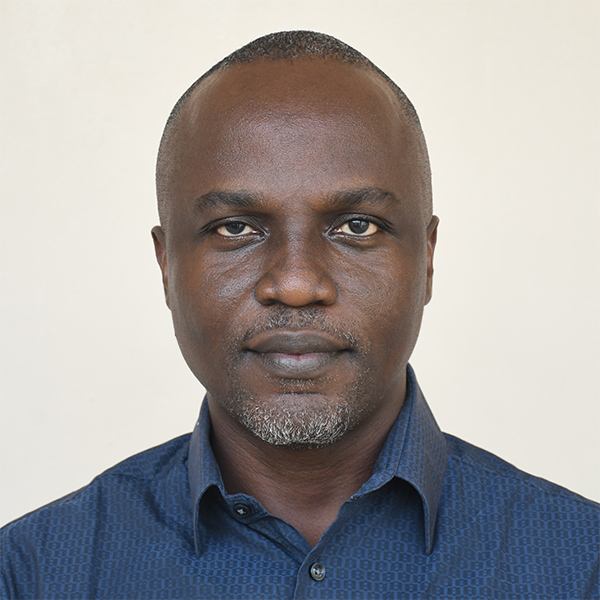
Prof. KEHINDE Adetunji L.
Dean, Faculty of Agriculture
Email:
![]()
FACULTY OF BASIC AND APPLIED SCIENCES
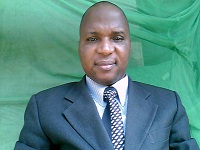
Prof. O. Israel OYEWOLE, B.Sc, M.Sc, Ph.D
Acting Dean, Faculty of Basic and Applied Sciences
Email:
FACULTY OF BASIC AND MEDICAL SCIENCES
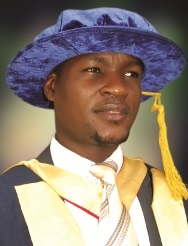
Dr. OYEYIPO Ibukun P. , B.Sc (Hons), M.Sc, Ph.D
Acting Dean, Faculty of Basic and Medical Sciences
Email:
FACULTY OF CLINICAL SCIENCES
Dr. Mrs. M.O. Isawumi
Dean, Faculty of Clinical Sciences
Email:
[ Read More... ]
FACULTY OF EDUCATION
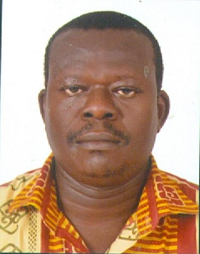
Dr. E. A. OKANLAWON
Acting Dean, Faculty of Education
Email:
FACULTY OF ENGINEERING AND ENVIRONMENTAL SCIENCES
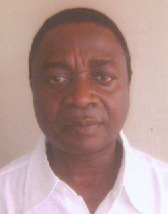 Dr. OLAWALE Simon O., B.Tech., M.Sc., Ph.D
Dr. OLAWALE Simon O., B.Tech., M.Sc., Ph.D
Acting Dean, Faculty of Engineering and Environmental Sciences
Email:
![]()
FACULTY OF HUMANITIES
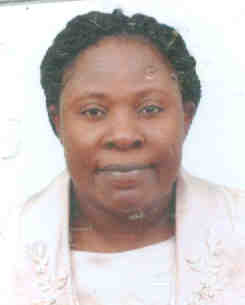
Dr. BALOGUN Temitope
Acting Dean, Humanities and Culture
Email:
Dr. Temitope Abiodun Balogun received her PhD from the University of Ibadan. She is an Associate Professor at Osun State University where she specialises in Functional Grammar,Pragmatics, Discourse Studies and Gender Studies. She was the acting Head of Department of the Languages and Linguistics between 2013/2014 and 2015/2016 sessions. She has attended conferences in many parts of the world like Leicester, United Kingdom, Minneapolis, USA and others. She has to her credit at the same time, many academic papers in both national and international outlets.
![]()
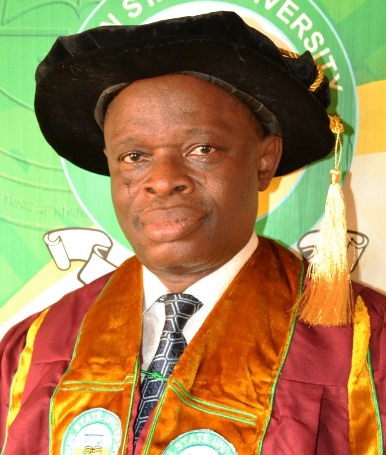 Prof. GBADAMOSI Olaide Abass
Prof. GBADAMOSI Olaide Abass
Acting Dean, Faculty of Law
Email:
Professor Olaide Abass Gbadamosi, a Professor of Migration Law is a member of Senate, Committee of Provosts, Deans and Directors, Board of Postgraduate Studies. Professor. O. A. Gbadamosi attended Igbinedion University, Okada, University of Benin and Nigerian Law School, Abuja respectively. [ Read More... ]
![]()
FACULTY OF MANAGEMENT SCIENCES
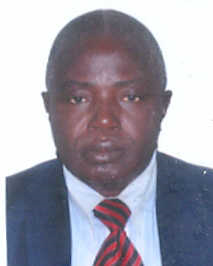
Dr. ILESANMI
Acting Dean, Faculty of Management Sciences
Email:
FACULTY OF RENEWABLE RESOURCES
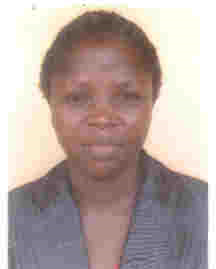
Dr. IPINMOROTI Mabel
Acting Dean, Renewable Resources
Email:
[ Read More... ]
![]()

Dr. ASHIYANBOLA
Dean, Faculty of Social Sciences
Email:
STUDENT AFFAIRS
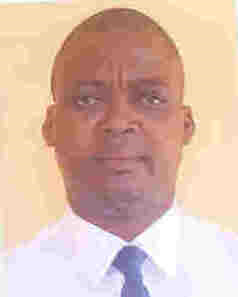 Dr. Oluseye O. ABIONA
Dr. Oluseye O. ABIONA
Acting Dean, Student Affairs
Email:
![]()
|
Accounting |
|
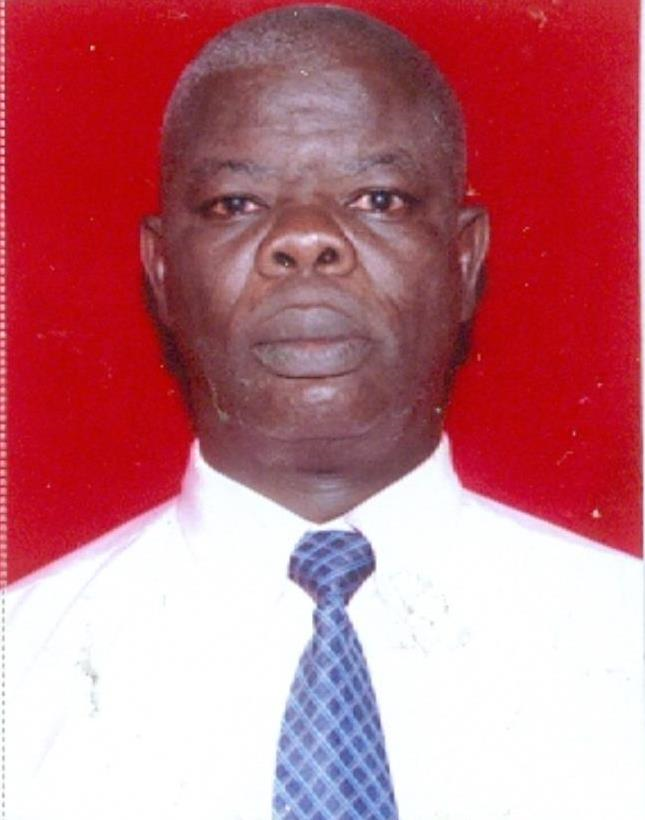 |
|
|
|
|
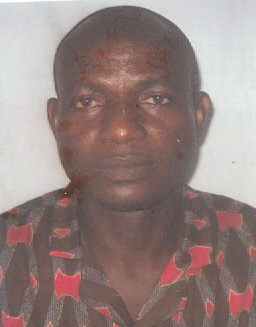 |
|
|
|
|
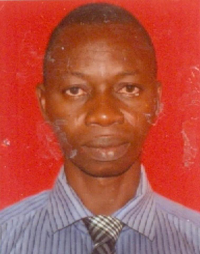 |
|
|
|
|
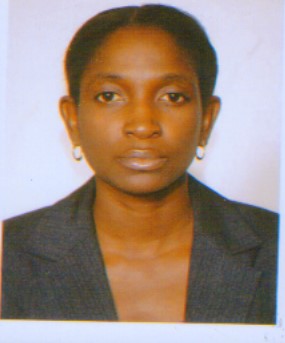 |
|
|
|
|
 |
|
|
|
|
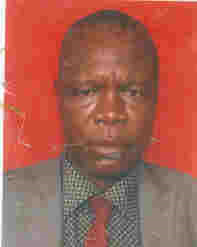 |
|
|
|
|
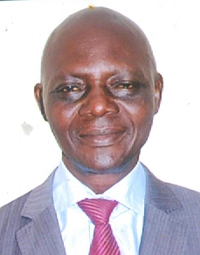 |
|
|
|
|
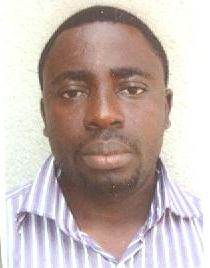 |
|
|
|
|
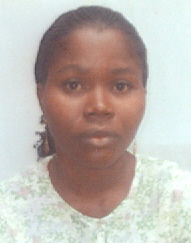 |
|
|
|
|
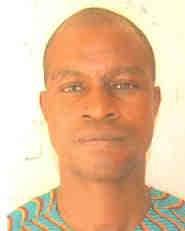 |
|
|
|
|
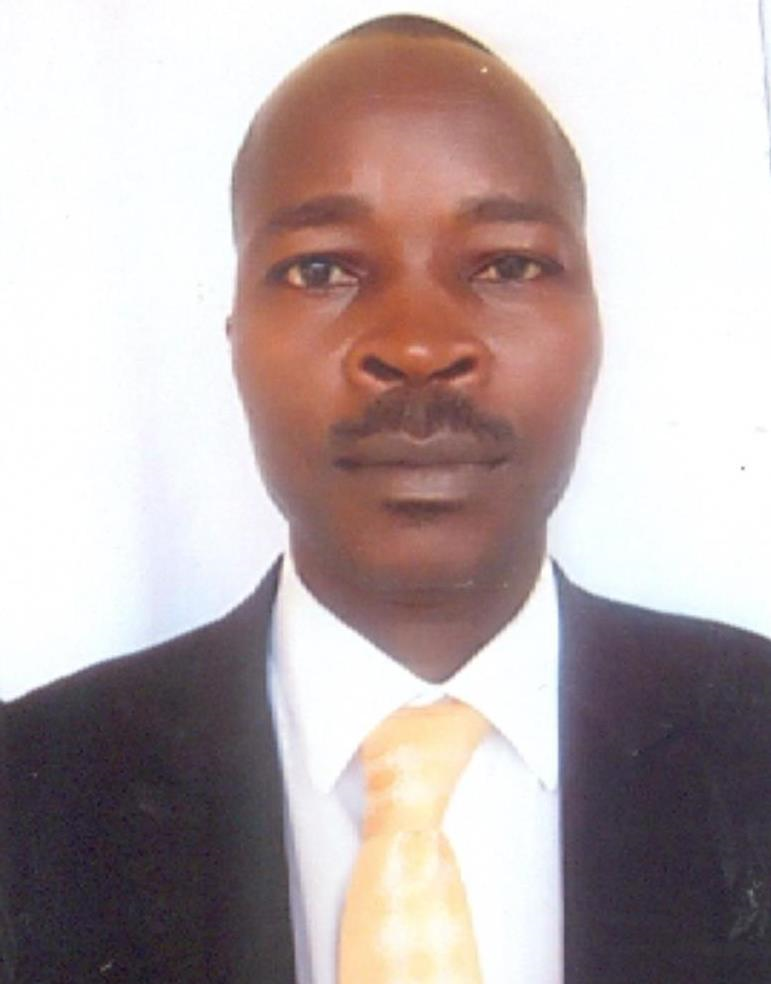 |
|
|
|
|
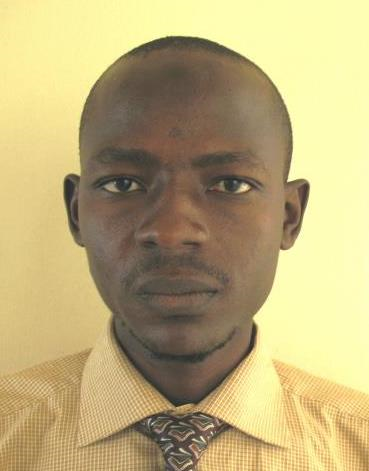 |
|
|
|
|
 |
|
|
|
|
 |
|
|
|
|
 |
|
|
|
|
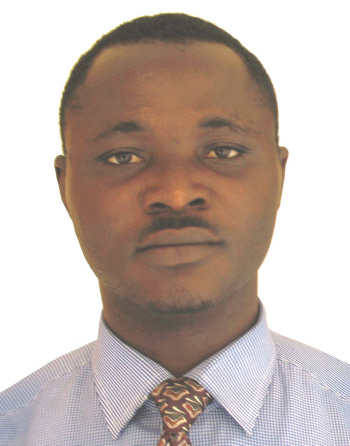 |
|
|
|
|
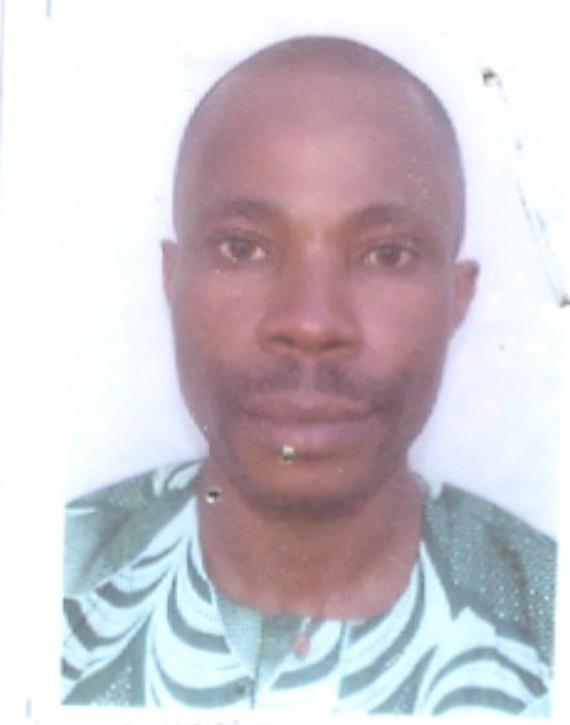 |
|
|
|
|
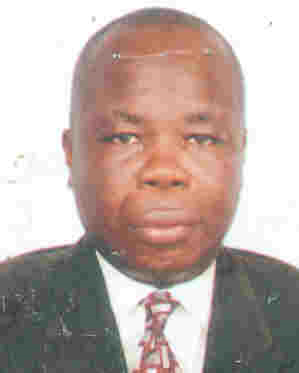 |
|
|
|
|
 |
|
|
|
|
 |
|
|
|
|
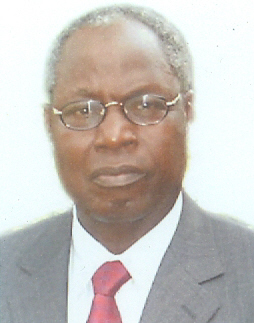 |
|
|
|
|
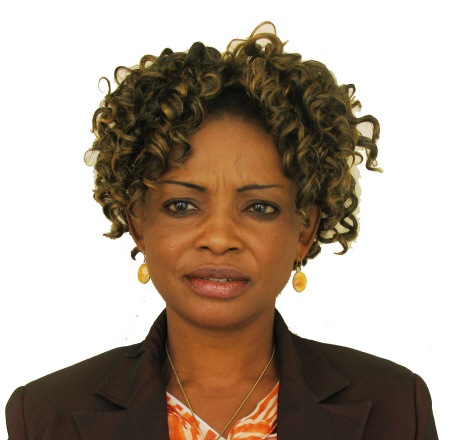 |
|
|
|
|
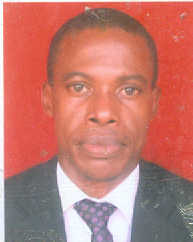 |
|
|
|
|
 |
|
|
|
|
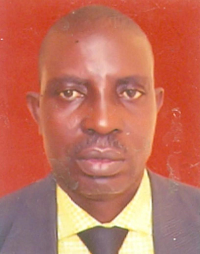 |
|
|
|
|
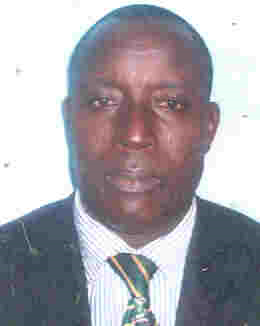 |
|
|
|
|
 |
|
|
|
|
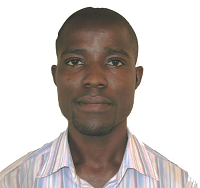 |
|
|
|
|
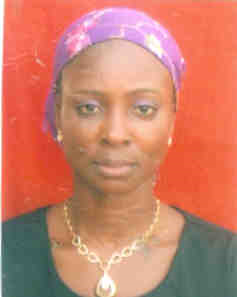 |
|
|
|
|
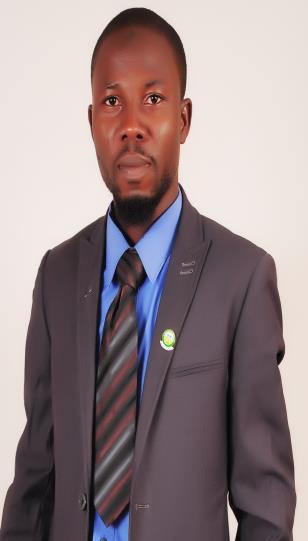 |
|
|
|
|
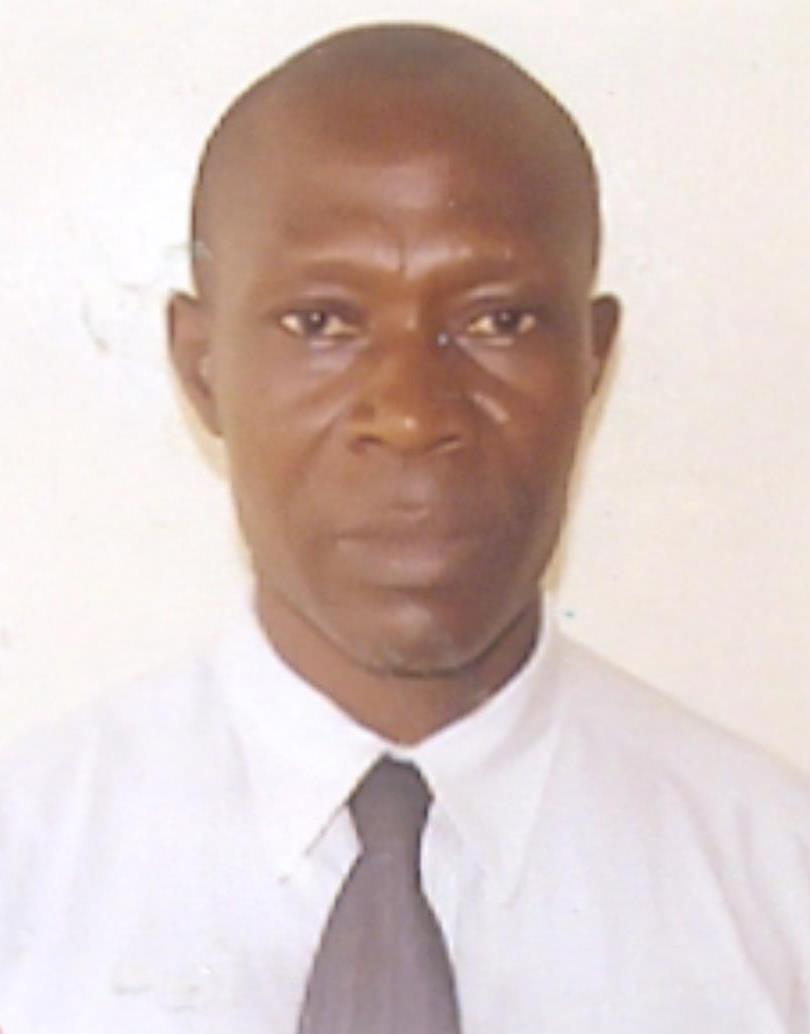 |
|
|
|
|
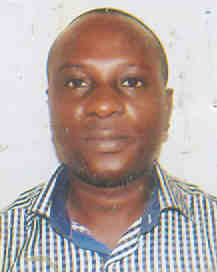 |
|
|
|
|
 |
|
|
|
|
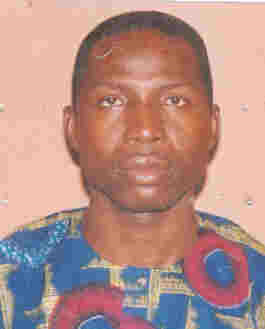 |
|
|
|
|
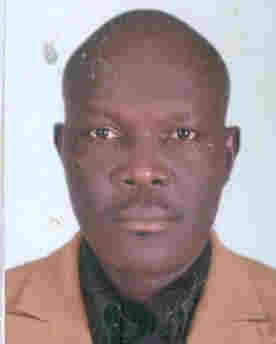 |
|
|
|
|
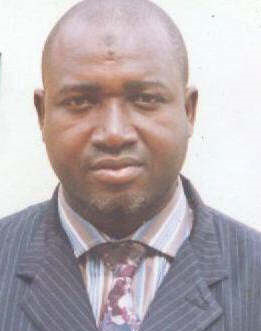 |
|
|
|
|
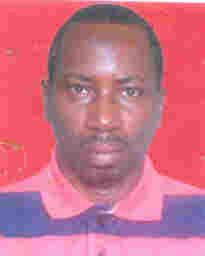 |
|
|
|
|
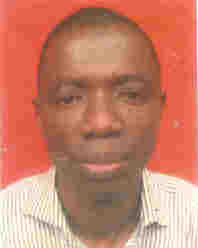 |
|
|
|
|
 |
|
|
|
|
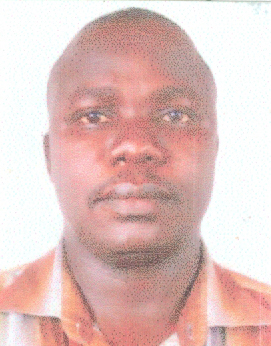 |
|
|
|
|
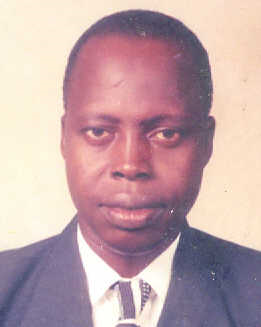 |
|

